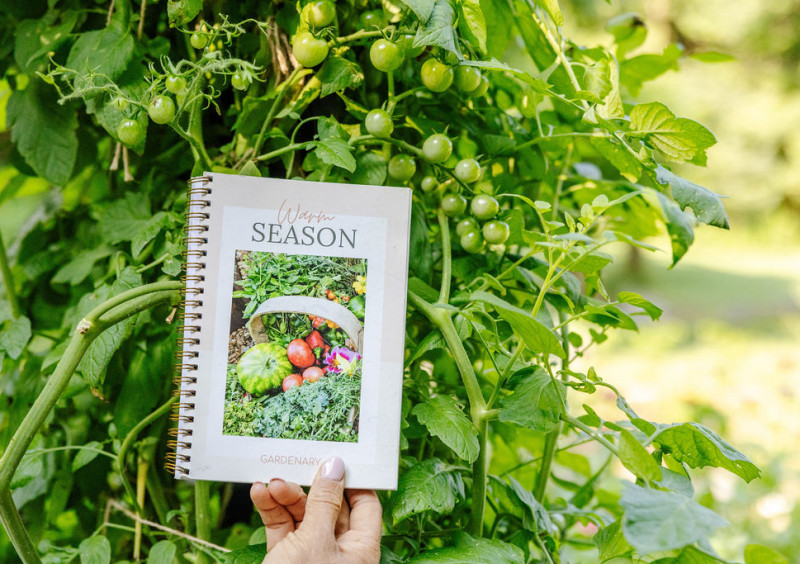Yellow Potato Leaves: What Do They Mean?
Yellowing leaves can be a good sign or a bad sign, depending on where you are in the potato growing process. If the leaves of your potato plant are turning yellow and you're nearing the time to harvest for the potato variety you're growing, then those yellow leaves are actually a signal that your potato harvest is right around the corner!
Potatoes grow for 90 to 120 days before they're ready to harvest. You'll know you're nearing the end date when your leaves start turning yellow, then brown. Eventually, they'll dry up and fall over, which tells you those spuds are ready to be dug up.
Yellowing leaves usually mean you're a couple weeks away from harvest. Your plant is putting all its energy toward finishing off the tubers, so it can't spare anything for the leaves. This is a good time to stop giving your plants supplemental water so the tubers will toughen up underground before harvest time.
All right, now let's look at potential reasons your leaves might be yellowing if you're nowhere near harvest time.
At A Glance
- If your potato plants are nearing maturity (90–120 days), yellowing leaves are a natural sign that the tubers are finishing up. Stop watering at this stage to help the skins toughen before harvest.
- Premature yellowing usually signals an issue: nutrient deficiency (especially nitrogen, iron, or magnesium), overwatering leading to root rot, or pests like aphids or leafhoppers.
- Add compost (hilling) for nutrients, adjust watering to prevent soggy soil, and remove pests or affected leaves. If yellowing continues, consider harvesting early for “new potatoes,” and plan to improve soil or container drainage for next season.
Yellow Leaves Before the Time to Harvest
If your plant is not yet mature, then yellow leaves are, I'm sorry to say, not a good sign. You've got a nutrient problem, a watering problem, or a pest problem. Let's look at each of these problems and how you can fix them.
The 1st Possible Cause
Lack of Nutrients
Yellow leaves could be a sign of a nutrient deficiency. If it's mostly the older leaves on the plant that are yellowing, the plant might need nitrogen. If the veins of the leaves stay green while the rest yellows, it could be iron that's missing. And if your leaves are looking striped, it might be a magnesium issue.
All you have to do to solve a nutrition issue is push some compost around the base of your potato plants. This is called hilling. In addition to adding more organic matter, hilling also helps support the plant and ensures the growing tubers are covered. I typically don't add additional fertilizers to my potatoes because compost will provide everything they need.
Gardenary's Warm Season Garden Planner
This beautifully designed planner takes the guesswork out of gardening and helps you stay organized, inspired, and on track during the warmer months.

The 2nd Possible Cause
Overwatering
Yellowing leaves can also be a sign of disease or root rot caused by overwatering. Potato plants really don't like to have their roots sitting in water. The goal is to give these plants a deep watering and then allow the area to dry out before watering again. Use your finger as a water gauge: Only water when the soil feels dry 1 to 2 inches down.
If you're growing your spuds in a container, make sure that water is able to come out of the drainage hole at the bottom.
If you're growing in the ground, make yourself a note to amend the soil next year down to 12 inches with some coarse sand and compost. The sand will improve drainage so you don't have a repeat issue.


The 3rd Possible Cause
Pests
Common pests like aphids or potato leafhoppers can cause potato leaves to turn yellow. You may also notice holes in the leaves, curling leaves, or wilted leaves. Knock aphids off by giving your plants a sharp blast with a garden hose. Prune any pest-affected leaves and toss them in the trash. Learn more ways to deal with garden pests organically.
Leaves, Roots & Fruit
Do you dream of stepping outside to harvest fresh herbs, crisp greens, or juicy tomatoes, right from your own backyard? In Leaves, Roots & Fruit, bestselling author and garden educator Nicole Johnsey Burke shares her proven framework to help any gardener—even beginners—grow fresh food all year long.

Hope That Helps You Decode Your Yellow Potato Leaves!
If you're still not sure what the issue is, prune all the yellowed leaves and push some compost around the base of your plants. Stop giving your plants extra water until you're sure the soil has dried out a bit. If the problem persists, then you may need to harvest your plants early.
Potatoes formed underground before the plant has reached full maturity are still edible. They're called "new potatoes," and they need to be harvested carefully and then enjoyed ASAP since they won't have had time to toughen up their skin for long-term storage.
If you pull up your potatoes and notice they're molding or rotting underground, then that's your sign that your plants were given way too much water. You created swamp-like conditions underground—never a good thing. You might switch to growing in a container next year or just ease up on the watering hose. Follow these steps to plant your potatoes so you know you're setting them up to grow under the right conditions.
If you're not able to save your potato plants this year, don't stress. Even the most experienced gardeners learn lessons every year. Do your best to figure out what went wrong and then try again next season!





